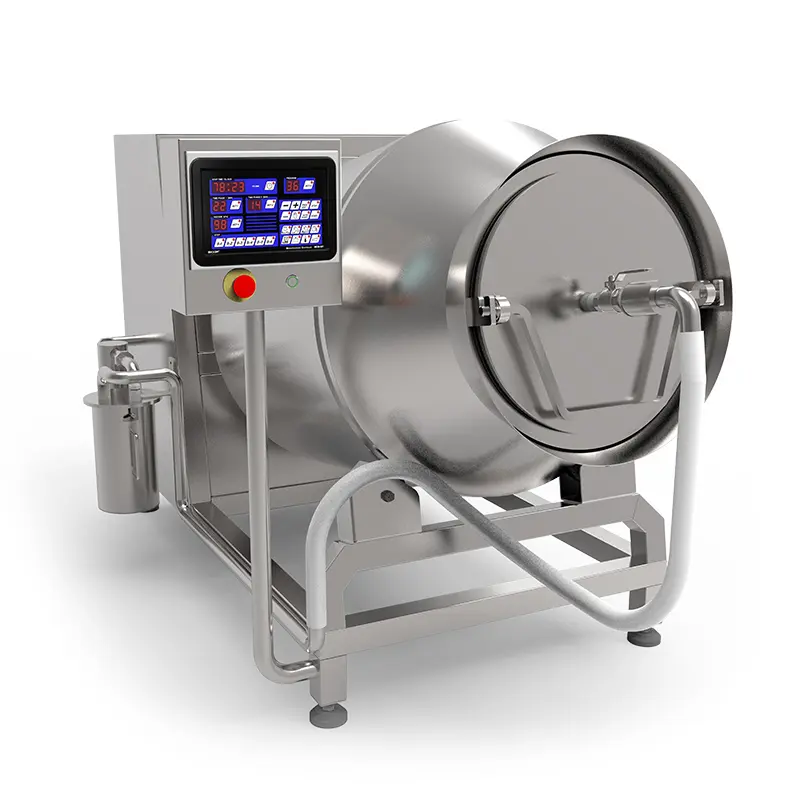Future of Autoclaves in the Food Industry: Smart, Sustainable, and Safety-Focused

What’s Changing in Food Sterilization?
1. IoT and Real-Time Data Analytics
Today's industrial autoclaves are integrated with smart sensors and cloud-based platforms that track sterilization cycles, monitor internal conditions, and generate performance logs. For food manufacturers, this means:
- Full traceability for audits (HACCP, GFSI, USDA, CFIA)
- Preventive maintenance alerts before breakdowns
- Immediate insights into cycle deviations or sterilization failures
2. Touchscreen Interfaces & Remote Access
Operators now use touch panels to select recipes, control temperature, or adjust pressure with a tap. And in larger operations, maintenance managers can monitor autoclave systems remotely via apps or secure web portals—reducing response time and preventing production losses.
3. Energy Recovery and Resource Efficiency
Modern autoclaves for food production now include:
- Heat recuperation systems to reuse steam
- Optimized water usage
- Reduced cycle times through AI-regulated preheating
This leads to major cost savings—especially for producers running multiple shifts or sterilizing large volumes of packaged meats or sauces.
New Trends in Food Sterilization Technology
4. Dry Heat Autoclaves (Alternative to Steam)
Though steam is the standard, dry heat models are being adopted in niche food categories where moisture must be avoided (e.g., dehydrated snacks, high-barrier pouches). They offer:
- Lower contamination risk
- Energy savings (no steam generation)
- Easier cleaning and maintenance
5. Hybrid Sterilization Systems (UV, VHP, Ozone)
New food-grade hybrid systems combine vaporized hydrogen peroxide (VHP), ultraviolet light (UV), and ozone sterilization. These offer lower temperatures and reduced chemical residues, suitable for:
- Delicate proteins (e.g., seafood, pâtés)
- Vacuum-packed ready meals
- High-protein plant-based products
Custom-Built Systems for Food Sectors
Every food processor has unique needs. That’s why the trend is toward modular and industry-specific designs, including:
- Compact autoclaves for artisanal or regional meat producers
- Continuous sterilizers for high-volume retort lines
- Horizontal batch autoclaves for canned sausages, pâtés, and meat sauces
KOMPO North America, for example, already supports meat processors in Canada and the USA with custom integration, full tech support, and equipment certified for North American regulations.
Market Outlook in Food Processing
While the autoclave market in healthcare is forecasted to hit $1.2 billion by 2027, the food sterilization segment is expected to grow at over 6.5% CAGR, driven by:
- Growing demand for shelf-stable high-protein foods
- Export requirements for sterilized packaging
- Rising pressure for food safety compliance and audit readiness
Final Thoughts and Recommendations
Food manufacturers should not view autoclaves as just a cost—but as an investment in risk reduction, process stability, and brand protection.
3 key actions for 2025:
- Invest in smart autoclave systems with traceability and automation
- Train staff in preventive maintenance and digital operation
- Evaluate hybrid sterilization options for niche or sensitive products
You can order a new generation industrial autoclave for canning in Canada and the USA from us. We also offer a wide range of industrial food equipment and consumables at the best prices in Canada and the USA.
